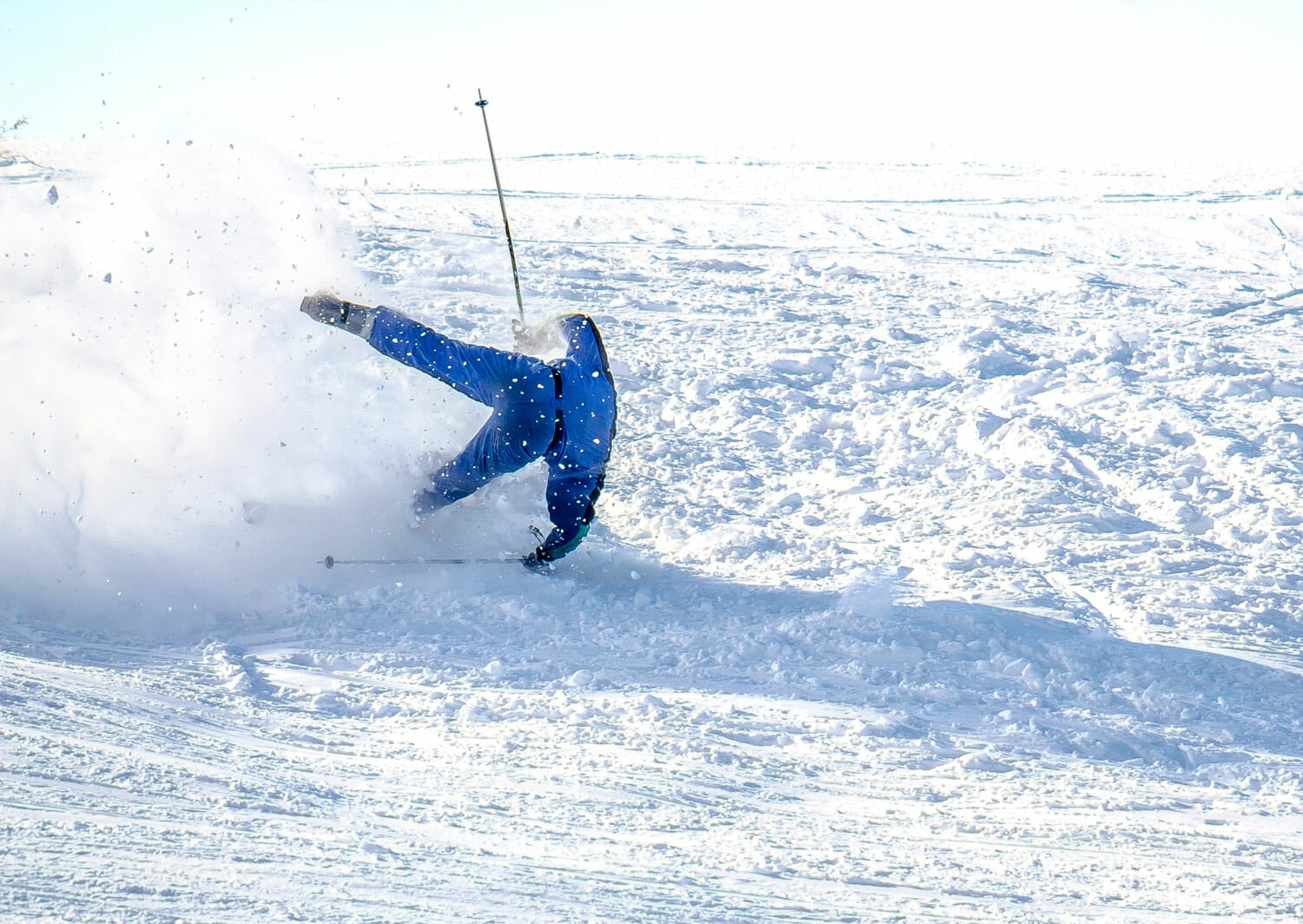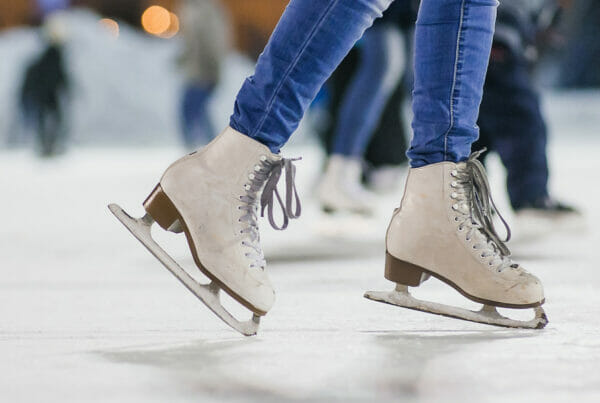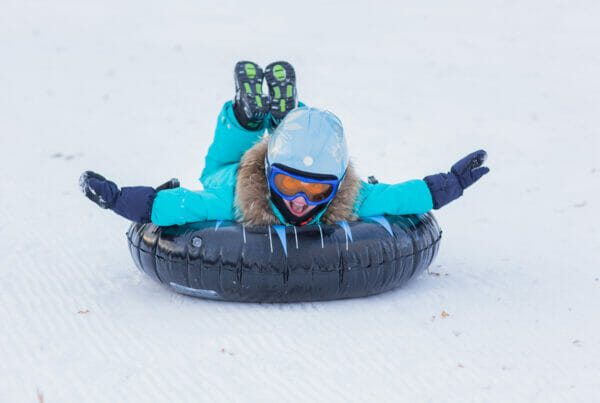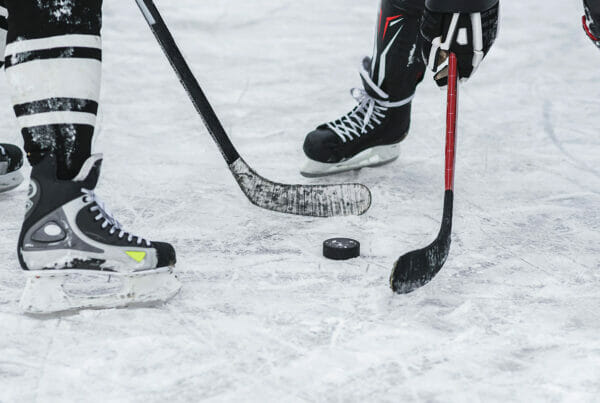The thrill of skiing draws hundreds of thousands of people to Utah’s mountains each year. Speeding downhill on fresh powder gives you a feeling that you can’t get anywhere else. But all that speed means lots of bumps, bruises, sprains, strains, and, occasionally, something more serious.
Next time you’re on the slopes, take precautions to help prevent these common ski injuries. Check out our other tips for preventing other winter sports injuries and avoiding snowboarding accidents and injuries.
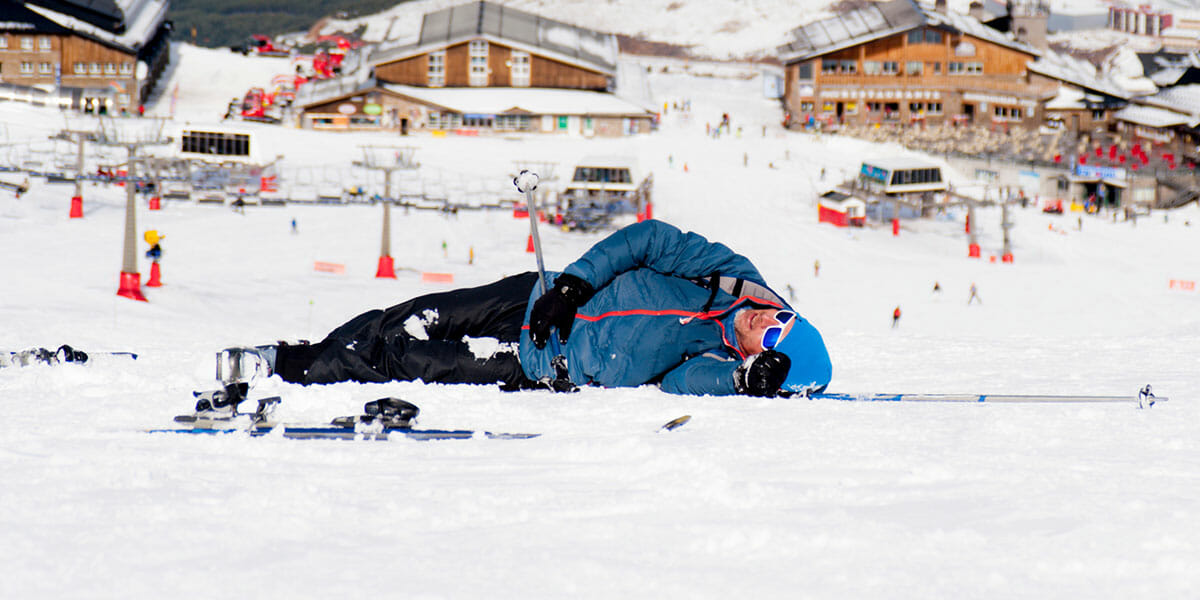
Common Skiing Injuries
Knees
Knees are the most common ski injury. Common ski knee injuries include sprains, strains, and tears to two major ligaments, the ACL and the MCL.
The knees contain the anterior cruciate ligament (ACL) and the medial collateral ligament (MCL). Athletic activities that involve changing direction, like skiing, often strain these ligaments. With enough strain, the ACL and the MCL can tear or rupture. Usually, that’s how you get a severe skiing knee injury.
If you have a lot of knee pain skiing, consult a Utah physical therapist or orthopedist. They can help you strengthen your legs or adjust your form, which can help take the strain off your knees.
Wrists
The fresh powder may look soft, but a fall at high speeds can still break your bones. Falls lead to a lot of wrist injuries for skiers. You may reach out to break your fall, but it’s possible to break your wrist instead.
Head
Hard falls also lead to head injuries. Falling skiers often get cranial bruising or concussions from hitting their heads on the ground. Severe falls can even result in skull fractures.
Back
The unnatural movements involved in skiing can cause a lot of muscular strains in your back. Falls and crashes can cause more severe injuries.
Spine
The high-velocity impact of skiing crashes can result in whiplash and other spinal injuries.
Shoulders
Skiing falls can cause dislocated or fractured shoulders.
Legs
The broken leg while skiing is more than just a movie trope. Skiers break their legs on the slopes from crashing at high speeds, falling off the chair lift, or other accidents at high speeds and steep inclines.
Ankles
Sprained and broken ankles regularly result from skiing.
Feet
The unique skiing motion can put unusual stress on your feet and cause sprains or stress fractures.
Thumbs
Sprained thumbs occur so often in skiing there is a condition called “skier’s thumb.”
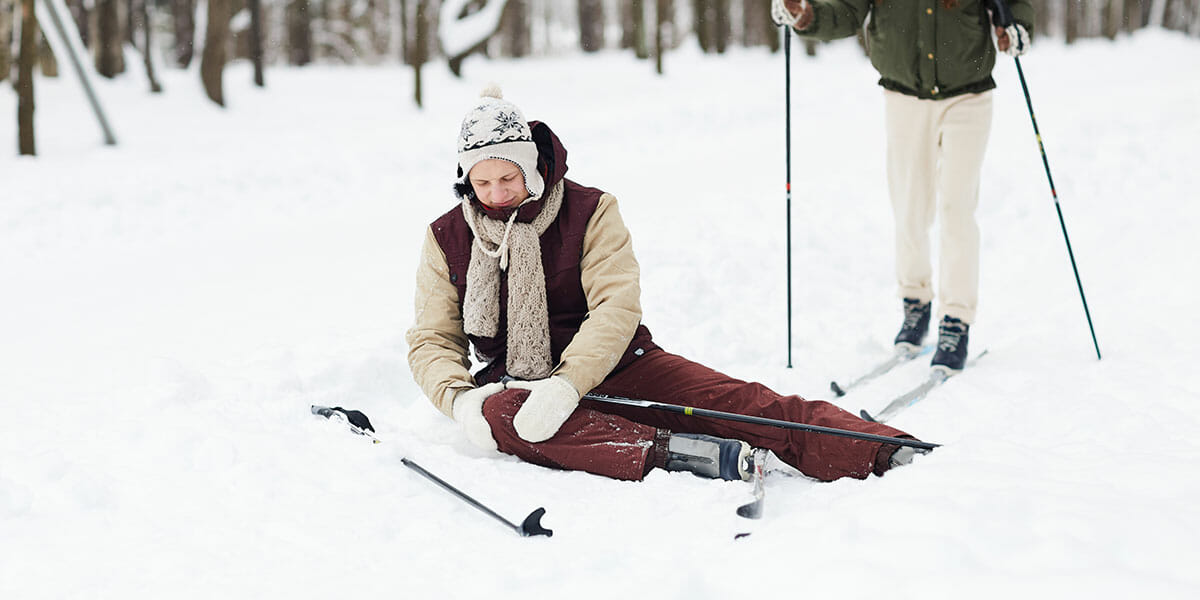
How to Prevent a Skiing Knee Injury
Ligament Strains and Tears
When you speed down the mountain and then change direction, you put the pressure of your full momentum into all the little ligaments and tendons in your knee. Sometimes that pressure strains them, and in extreme cases, they can rupture.
Injuring any ligament in your knee will cause pain. Injuring your ACL or MCL can stop your knee from functioning properly.
ACL Injuries
The ACL regulates how far your upper leg and lower leg can stretch apart inside your knee.
Stopping suddenly or changing direction while hyperextended can tear or rupture your ACL. People often hear a snapping or popping sound when the ACL ruptures.
MCL Injuries
The MCL, found on the inside of the leg, prevents your knee from bending inward. You could injure your MCL while skiing in many ways, and the cold weather makes the ligament even more vulnerable to tearing.
How to Prevent ACL and MCL Skiing Injuries
You can reduce the likelihood of an ACL or MCL injury by taking precautions and by skiing within your control, using the proper technique.
Prepare your muscles for work
Start exercising before ski season to get your legs, and everything else, into skiing shape.
Address any nagging aches or injuries before you hit the slopes
RPT’s physical therapists can help you design a workout plan to work with your body and prepare you for ski season. Schedule an appointment today.
Warm up with a light jog
Then, complete a quick stretch of your legs to get loose and ready for a day of fun on the slopes.
Drink lots of water before and during your day of skiing
Fully hydrated muscles will cramp less and are less susceptible to injuries. They will also help you maintain more body control later in the day when you might otherwise begin to fatigue. That control will help you avoid risky body positioning.
Wear a protective knee brace
You can get knee braces specifically designed to help prevent ligament tears while skiing. The brace prevents your knees from bending in a way that would cause a tear while still allowing the motion necessary to ski.
Don’t ski too fast
You can’t fully prevent ACL injury skiing at top speeds; you can only reduce the odds. The force produced by your body going downhill at full speed is too much for your ligaments to handle if they get pulled the wrong way.
Reducing your speed also increases the time you have to react to danger so you can avoid falling.
Use proper form while skiing
Keep your legs close together and parallel. When your legs get too wide, you strain your ligaments. Keep your weight forward and bend all of your leg joints.
Reduce your speed before stopping
A sudden stop, especially at an incline, puts extra strain on your joints.
If you fall, fall loosely
Do not stiffen up or straighten your legs. Don’t try to break your fall. Wait until you stop moving before you try to get up.
What to Do if You Injure Your ACL or MCL While Skiing
ACL Skiing Injuries
If you hear your ACL snap or you suspect you injured it, stop skiing. Contact an orthopedist to assess the injury.
Recovering from an ACL tear may require surgery and, in almost all cases, physical therapy.
MCL Skiing Injuries
If you injure your MCL while skiing, get to a safe area and stop skiing. Ice the inside of your knee and keep it elevated. When you get home, contact an orthopedist to assess the injury.
With time, your MCL will heal, but it may be a long and painful process. Pain management and physical therapy can help you recover.
If you need help recovering from an ACL or MCL injury, RPT can help with a physical therapy recovery plan designed specifically for you.
How to Avoid a Skiing Knee Injury
Tips for preventing knee injury while skiing:
- Get in shape for ski season
- Hydrate
- Warm up and stretch
- Go slow
- Keep a narrow, parallel skiing stance
- Slow down before stopping
- Go loose if you fall
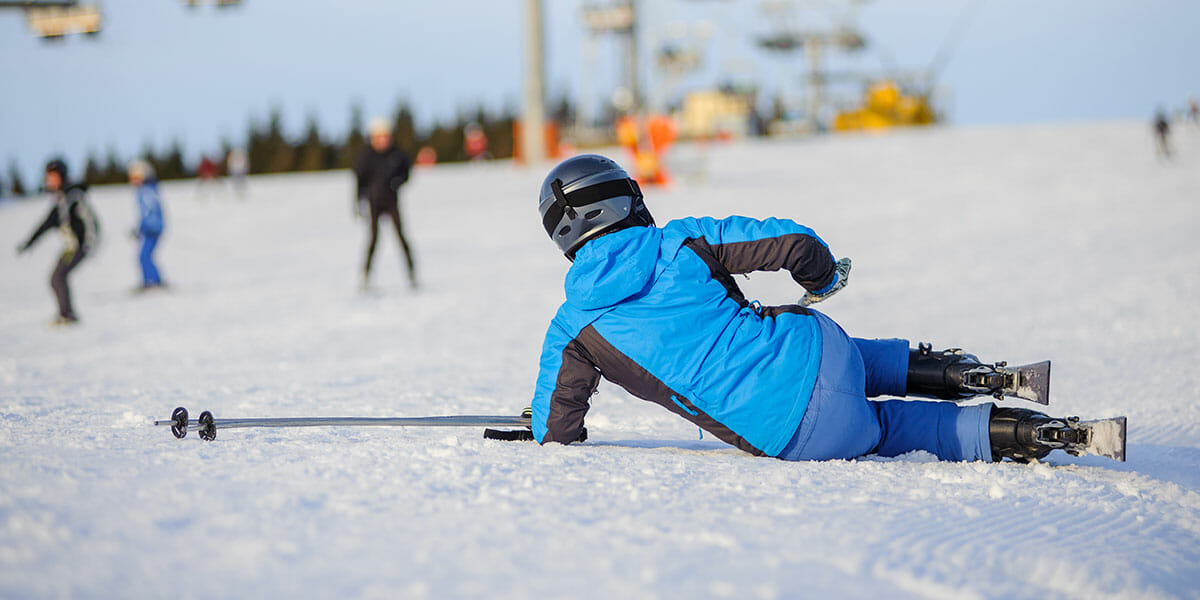
How to Avoid Back Injuries While Skiing
Preventing back injuries from skiing involves muscle care and avoiding hard falls or crashes.
Build up the strength in your back before ski season with a few targeted exercises. Warm up and stretch before and after skiing.
While skiing, maintain a speed you can handle to avoid falling or running into objects or other people. Your back will thank you.
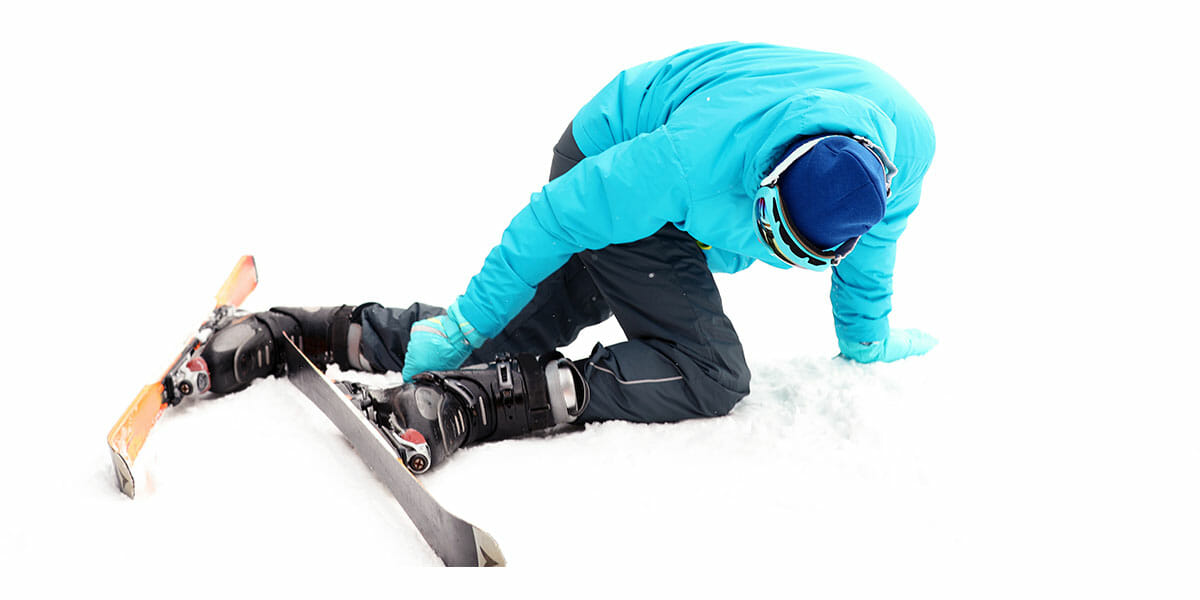
How to Prevent Fractures and Broken Bones from Skiing Injuries
- Remain upright and under control to avoid fractures and broken bones caused by falling or colliding with objects or other skiers.
- Maintain good fitness habits to stay stronger and more resistant to fatigue.
- Wear gear that fits. Ill-fitting gear can put tremendous strain on your bones and joints.
- Avoid putting yourself and others at risk by attempting runs beyond your skill level.
- Keep your speed under control and avoid jumps, especially with blind landings.
- Know your limits. Rest when you get tired. Get plenty of water and food.
- Adopt a recovery routine to prime your body for a rejuvenating night’s rest.
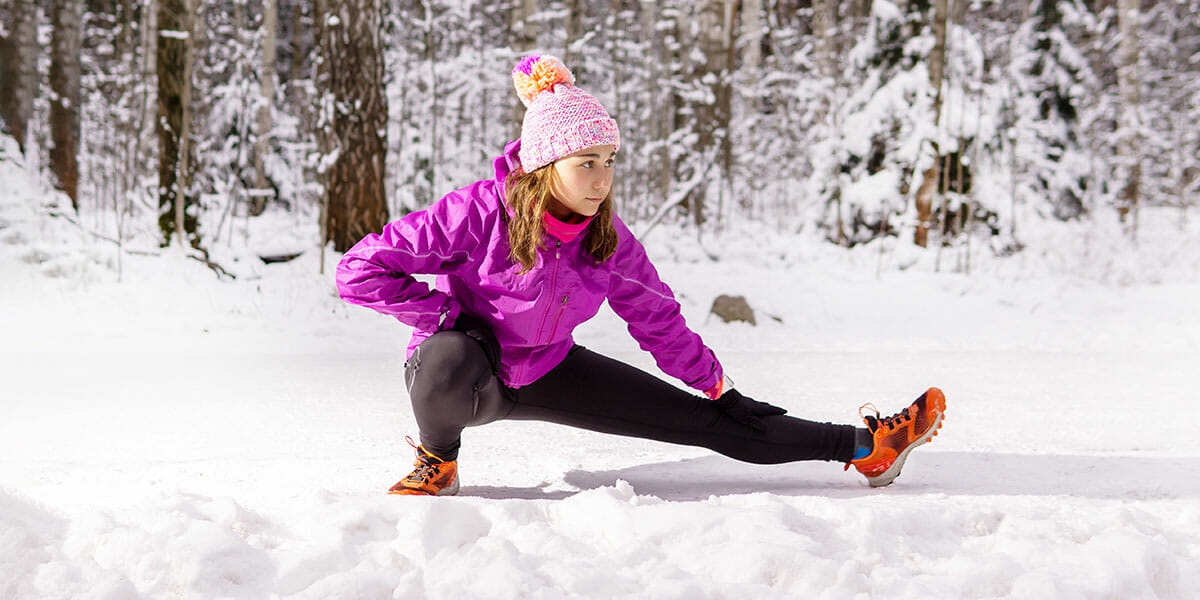
Proper Recovery from Skiing Injuries
Use these tips on how to relieve sore muscles after skiing to recover from a long day on the slopes (or maybe a short day early in the season).
Hydrate
Continue drinking water throughout the evening. Remember, drink water and not just the kind fermented with hops and barley. We love après-ski too, but remember to stay hydrated so can get back out there and ski the next day.
Stretch
Try these post-ski stretches to ease the tension in your muscles. Or, contact RPT to discuss a recovery routine designed just for you.
Trunk Rotations
Stand with your feet flat, shoulder-width apart. Rotate your shoulders from side to side, allowing your arms to swing freely.
Standing Quad Stretch
Stand on one foot by picking the other food up and curling it behind you. Grab your toe with your hand and pull your foot close to your backside.
If you have trouble balancing, place your foot flat and stare at a single spot on the ground. Or use the wall for support.
Glute Stretch
Lay on your back. Bring your knee straight up to your chest. Grab your foot with the opposite hand. Pull your foot toward your opposite shoulder while simultaneously hugging your knee. You should feel a stretch in your glute.
Calf Stretch
Get down on your hands and knees. With your hands still on the ground, raise your backside in the air and shift from your knees to your feet. Your body should be in the shape of a capital letter “A” without the cross beam. While in this position, cross one foot over the other and push your heel toward the floor until you feel your calf stretch.
Side Lunge Stretch
Stand with your legs wide apart but with your toes still pointing forward. Bend one knee while keeping the other leg straight. This should stretch your groin. For a deeper stretch, use your elbow to push your bent knee outward.
Ice Injuries
Ice down any injuries or sore spots. Even better, if you can stand it, soak your entire lower body in an ice bath. (You only feel it for the first 30 seconds.)
Heat Your Core
After spending all day out in the snow, warm yourself to the core in a hot tub, sauna, or just a long, hot shower. The heat will help your muscles relax so you can get a good night’s sleep while they regenerate.
Don’t stay in the hot tub longer than 30 minutes. It can sap your energy and leave you lethargic the next day.
Get a Massage
Get a massage after spending the day on the slopes. If you can find one available, book your appointment with a therapist specializing in sports massage.
Rest Up!
Take it easy after your day of skiing. Get some sleep. Your body won’t recover if you spend the whole night out partying.
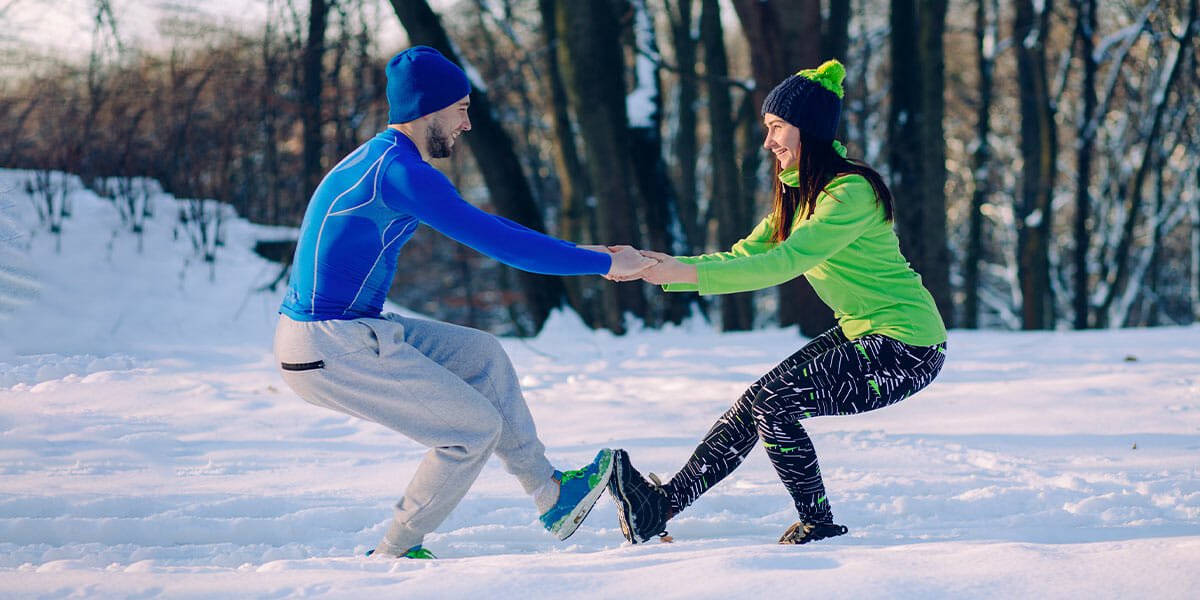
Ski Exercises for Bad Knees
If you’ve ever wondered, “Can I ski with a torn ACL,” the answer is yes. You don’t have to quit skiing forever after a knee injury, even an ACL injury.
After you recover from your injury, you can strengthen your knees so you can get back out there. There aren’t exclusively ACL exercises for skiing; we recommend the following exercises for strengthening your knees, especially if you’ve had any kind of knee injury in the past and want to get back to skiing.
We also recommend consulting a licensed physical therapist before starting any exercise routine after an injury.
Double Leg Squats
Sometimes called deep-knee bends, double-leg squats consist of standing with your feet shoulder-width apart and squatting down like you’re about to sit in a chair. Keep going down until your thighs are parallel to the ground, then stop and stand back up. Repeat. Over time, you will strengthen your legs and knees.
Single-Leg Squats
Single-leg squats are like double-leg squats, except you use just one leg. You can extend the other leg or cross it over your knee.
Wall Sits
To perform a wall sit, stand with your back near a wall. Do a double-leg squat, but instead of standing back up when your thigh gets parallel to the ground, stay down and lean against the wall. Remain in the seated position for 30 seconds.
If you have further questions about treating your ACL so you can get back to skiing, we’re happy to help. The qualified physical therapists at RPT can help you recover and develop a strength routine to help prevent future skiing injuries.
Make an appointment with RPT to treat your skiing injuries or ACL tear and get help with exercises to prevent ski injuries in the future.


